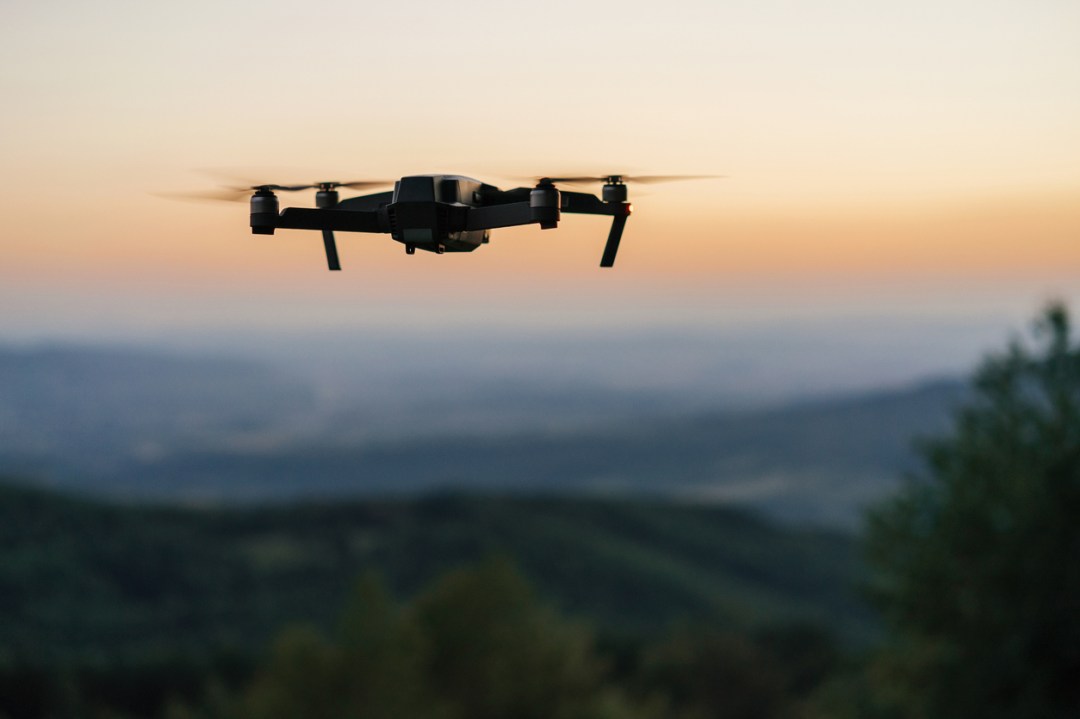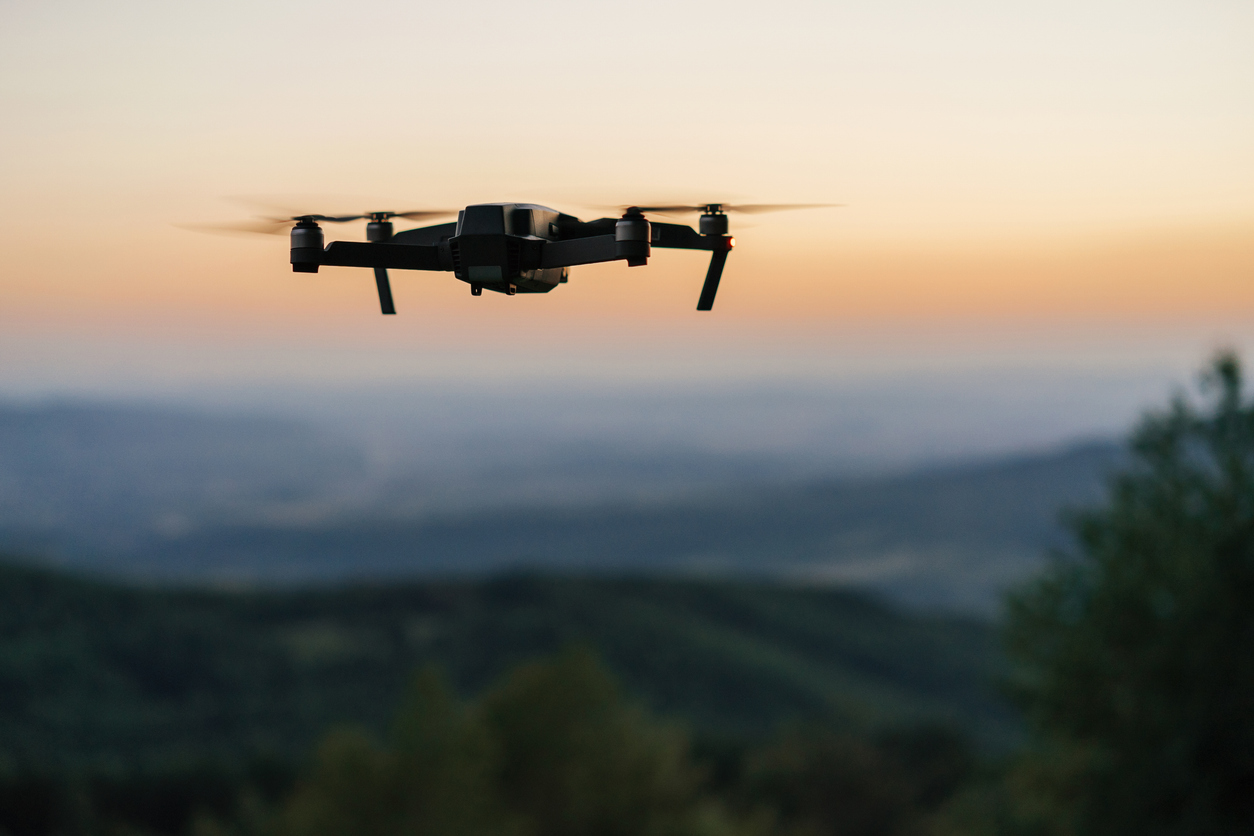After multiple suspected drone incursions by Russia, the EU has belatedly swung into action with plans for a ‘drone wall’. This network of anti-drone radars, sensors, signal jammers and interceptors – which would mimic Israel’s ‘Iron Dome’ defence system – would be built along the 3,000 km eastern front of the union’s territories by 2027.
Whether used by terror cells or militarised nations, drones are cheap, simple to fly and easy to pack with explosives
But while the EU builds the ‘wall’, the barbarian is already inside the gates. No threat – be it Russia, or any other hostile nation – needs to launch drones in their own territory to cause a mass casualty attack here. They can do so using drones bought legally on the high street.
Last week, a foiled drone attack in Belgium, targeting the home of Prime Minister Bart De Wever in Antwerp, was described by prosecutors as a ‘jihadist-inspired terrorist attack’. Searches at the homes of three young suspects found a suspected improvised explosive device, a ‘bag of steel balls’ and a 3D printer. It has been suggested that they intended to use at least one drone to deliver an explosion capable of penetrating walls and causing mass fatalities. European reports later suggested that Antwerp mayor Els van Doesburg and Dutch anti-Islam leader Geert Wilders were also targeted.
Defence Minister Theo Francken told Flemish public broadcaster VRT: ‘It is terrible for Bart [De Wever] and his family, and of course [the suspects are] Islamists again’.
The minister added that drone technology was becoming ‘more and more dangerous’ and noted that there had been 80 terrorism investigations opened in Belgium this year – already more than the total number of cases in 2024. The three individuals arrested on suspicion of plotting the latest attack were born in 2001, 2002 and 2007. The eldest has since been freed due to a lack of evidence.
With alarming clarity, this shows how a group barely older than teenagers could potentially acquire explosive components, ball-bearing shrapnel and a drone to send them airborne. Unlike the Russian drones thousands of feet above Poland, these personal drones have almost zero chance of being intercepted by a fighter jet.
In Ukraine, drones have been responsible for up to 80 per cent of all casualties in the war, with both Kyiv and Moscow using a mixture of military grade drones and – equally often – modified consumer-level drones armed with explosives. Many are barely more sophisticated than the type a hobbyist might buy on Amazon. The sender of the drone often doesn’t need to be within the same postcode as the drone’s destination or flight path to launch it.
Whether used by terror cells or militarised nations, drones are cheap, simple to fly and easy to pack with explosives. And they don’t require the sender to put themselves directly in danger. In the UK, you can already buy drones capable of carrying up to 8kg. For comparison, a standard 155mm artillery shell can carry up to 11.3 kg of TNT explosive.
European nations have failed their early drone defence tests. Last year, in Bulgaria and Germany, security forces – relying on much-feted jamming technology – failed to bring down drones hovering over military sites. In 2018, planes were grounded at Gatwick Airport for 30 hours because authorities could not remove what was presumed to be a single nuisance drone.
Our most dangerous, high-security locations are also not stopping them. Chief inspector of prisons, Charlie Taylor, warned in July that authorities had ‘ceded the airspace’ above prisons to sophisticated drones. They have dropped contraband and even banned ‘zombie’ knives to inmates at HMP Manchester and HMP Long Lartin – both housing category A prisoners. Taylor added: ‘It’s entirely possible that they could get a gun in, then the prisoner can use that to potentially take hostages or to threaten staff in order to be able to get out. There is also the possibility that someone could be picked up by a drone to help them escape.’
Chillingly, a recent aerial drone display in China showed that 10,000 drones could be simultaneously controlled by one device with laser-accurate precision and rapid speed. Whole fleets of armed drones can be set on a pre-determined course not by a military superpower, but by a malicious group within Europe’s borders.
Defence investment has flooded into the production of drones, but there has been little investment in how to stop them. Three European drone-making companies – Helsing, Quantum Systems and Tekever – now have ‘unicorn’ status, meaning they have a valuation of more than $1 billion. Silvia Pfeifer, the aerospace and defence industries correspondent for the FT, warned this week that the drone production market is saturated while little investment is flowing into other counter-defence.
One of the few drone defence companies is Nordic Air Defence, which has devised a rucksack-sized launcher that can fire guided non-explosive projectiles at a drone, to down the drone while not harming civilians on the ground. Karl Rosander, the CEO and co-founder, launched the company in 2023 after seeing drones appear over his native Sweden and realising there was little deterrent. He said:
‘Drones will very soon be used not just to intimidate civilian areas in the west, but also used in directed explosive attacks. Drone technology is now readily available at all levels of affordability and sophistication, putting it in the hands of both major governments, rogue states and smaller terror cells. What’s being tested in Ukraine today will be replicated in London, Berlin or Paris tomorrow… The threat is real – the wake-up call could come in the form of unspeakable tragedy.’
Any deterrent will have to be affordable, mobile and easily deployed. Having sent fighter jets to down the last drone nuisance over Poland, Andrius Kubilius, European Commissioner for Defence and Space, said: ‘A €10,000 drone shot down with a million Euro missile – that’s not sustainable.’ Especially when in the Polish case, 20 drones arrived at once.
In the aftermath of the foiled Antwerp attack, De Wever posted a picture of himself on Instagram with his cat, Maximus. ‘Maximus, can you catch a drone?’ De Wever wrote in a speech bubble. Worryingly for Europe, Maximus is about as effective as our current drone defences.








Comments